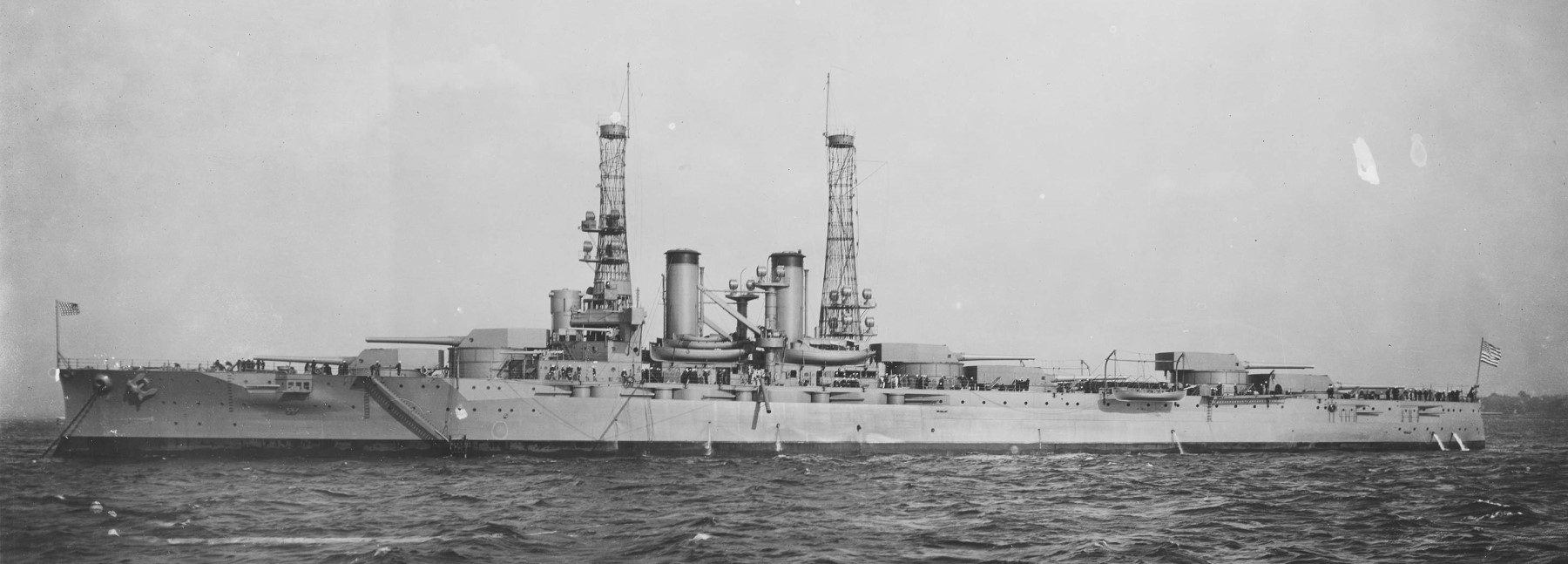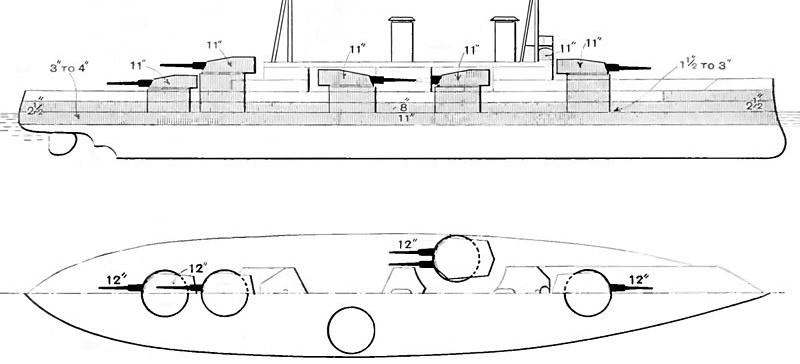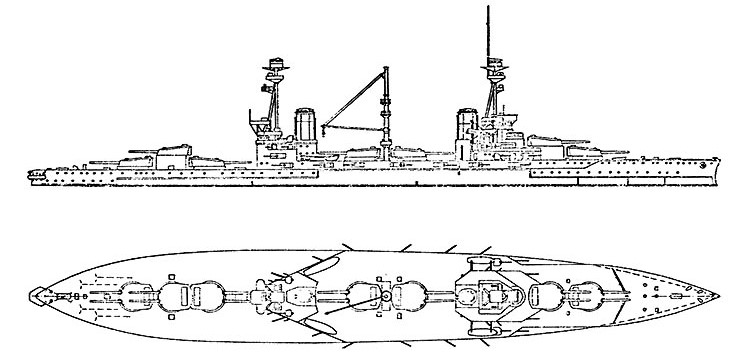When talking about battleships, it's often necessary to somehow name turrets. In the pre-dreadnought days it usually wasn't too hard, as there were only two main turrets, and you could call them "fore" and "aft". But dreadnoughts generally had between three and seven turrets, and different nations used different techniques to designate them.

USS Wyoming, showing turrets 1-6
The USN's system was the easiest to understand. The turrets were simply numbered fore to aft. While this system is simple and effective, it had one major drawback. It didn't deal with wing turrets well. This wasn't a problem for the USN, which never used wing turrets, but most dreadnought-owning navies did, and needed a different system.

Diagram of the Colossus class, showing turrets A, P, Q, X and Y
Britain and Germany both used letters, but they used them in rather different ways. The British system was reasonably straightforward. Each position had a specific letter. A was the foremost turret, while any superfiring turret was designated as B. Wing turrets were designated P and Q, usually with P being to port and Q to starboard. Q was also used for the single midships turrets of the ships armed with 13.5" guns. If there was only a single aft turret it was designated as X, also used for the third turret on the Nelsons. If there were two, X was used for the forward one and Y for the aft one.

Agincourt
The only exception to the above system I know of is HMS Agincourt. She had seven turrets, all on the centerline, which rather flummoxes the normal system. The usual explanation is that they were named after the days of the week, Sunday to Saturday. This may have been how the crew referred to them, but inspection of the plans revealed that they were numbered 1 to 7, as the USN would have done if they'd been crazy enough to build a ship with seven turrets.

The German Kaiser class, with turrets A through E
The German system is harder to understand. It starts with A turret at the bow, and each turret is lettered sequentially, running aft along the starboard side and then back forward along the port side. The first German dreadnoughts, which used a hexagonal arrangement, had B and C turrets to starboard, D turret aft, and E and F turrets on the port side, with F the forward one of the two. Later on, they switched to staggered wing turrets that allowed cross-deck firing. Turrets that the British would have designated A, P, Q, X and Y would instead have A, E, B, C and D in the German system. If the turrets were all on the centerline, the system is fairly straightforward, with the turrets designated fore to aft.

The Courbet class
The only other nations I have any reliable data on are France and Italy, who both appear to have numbered their turrets. This is slightly curious for France, as they used wing turrets on their first dreadnoughts, the Courbets. The port wing turret was numbered 3, the starboard one 4, with the others running bow-to-stern. I've looked a bit, but can't find Japanese or Russian practices easily. Numbering makes the most sense for Russia, who never used wing turrets. I'd guess the Japanese used something based on the British system, as they were heavily influenced by the RN, but at least some sources during WWII refer to the turrets by number. However, both nations had a tendency to make odd choices in these matters, and I can't say for sure.

Comments
The French system makes the most sense to me: You just turn the diagram so that the bow is at the top and then scan the turrets in the order you'd read them if they were words. Only their system makes it clear what they would do with Dreadnought Design G
Although the British system is somewhat nice in that you can read something like "A shell knocked HMS So-and-So's X turret out of action" and have some idea what it means without knowing HMS So-and-So's turret layout.
Yeah. From a historian's point of view, the British system is definitely best. The only possible confusion is that Q turret can be a wing turret or a midships centerline turret. The US system is OK if you're dealing with ships you know the setup of.
I've seen a fair few sources using the British system for American and Japanese ships, even. I actually wasn't aware it was specifically the RN's method as opposed to being something fairly standard.
The "days of the week" designation was also, according to legend, used by the crew of the Thomas W. Lawson, the only seven-masted schooner ever built.
Officially, they were fore, main, mizzen, jigger, spanker, driver and pusher, at least at launch.
Didn't use wing main turrets. The HNSA plans at least sometimes show numbers for the smaller mounts, which seem to be odd numbers to starboard, even numbers to port, in front-to-back order on each side but not necessarily across sides. (I don't know if they renumbered when more guns were added, or whether not wanting to do that was why the smallest weren't always numbered.) Sometimes each size starts from 1, sometimes they're prefixed with the caliber.
If I was being very pedantic, I'd point out that under USN terminology, those aren't turrets, they're mounts, and I only said turrets. Less pedantically, this post was on main battery turrets because I had no confidence at all in my ability to find details on the secondary battery systems outside of the Anglophone powers, and expected even that to be surprisingly difficult.
(necroing slightly after reading up on Prince of Wales' demise)
The WW II King George V class had turrets A B Y, not A B X